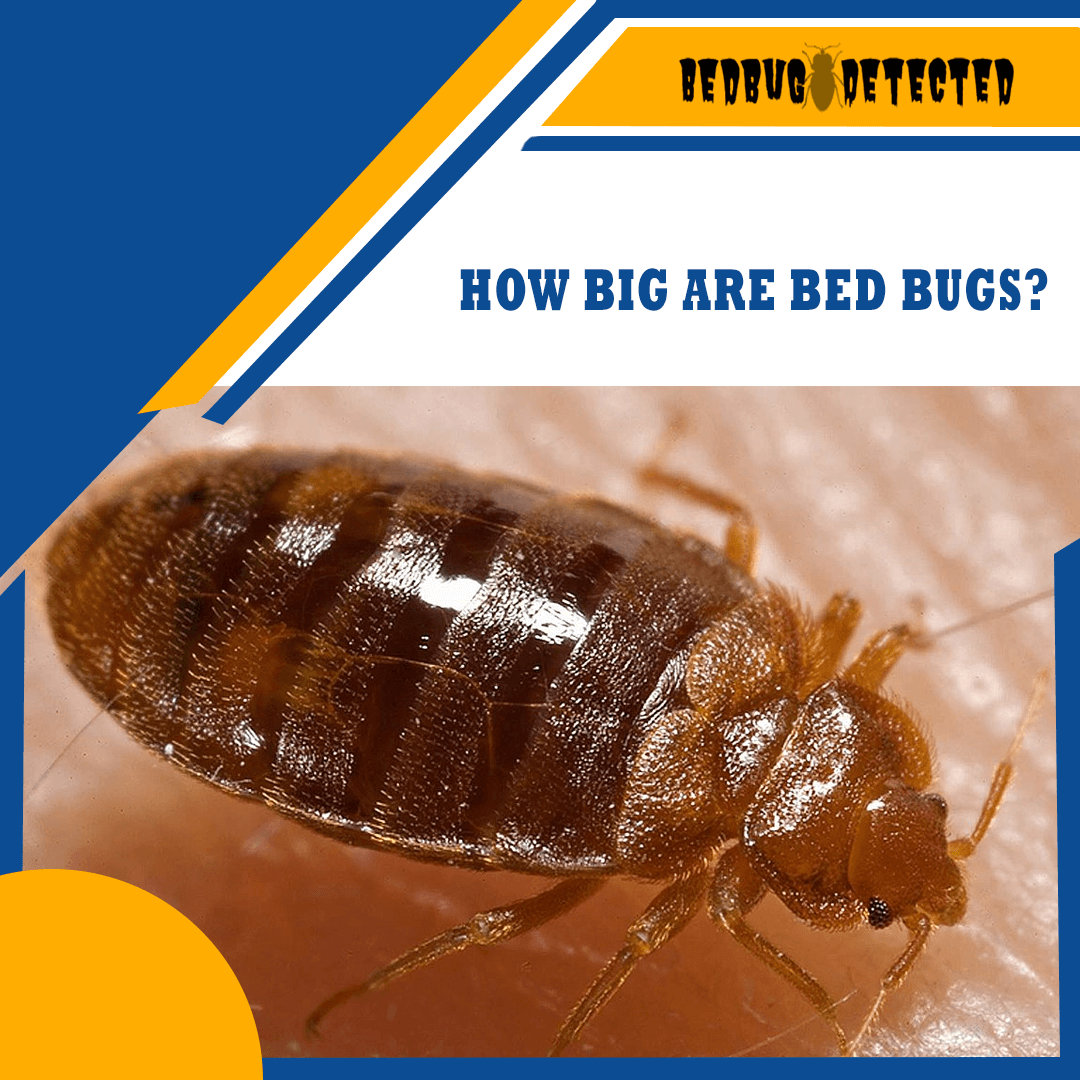If you’re dealing with a bed bug infestation, you might be wondering just how big these bugs are. It’s important to know the size of bed bugs so you can identify them and take appropriate action to get rid of them. In this article, we’ll take a closer look at how big bed bugs are and what you can do to prevent and eliminate them.
Table of Contents
Introduction
Bed bugs are a common problem for many households, and they can be difficult to get rid of. These tiny insects are nocturnal and feed on the blood of humans and animals. They can hide in cracks and crevices, making them difficult to spot. However, one of the key things you can do to identify bed bugs is to understand their size.
In this article, we’ll explore how big bed bugs are, how to identify them, and what you can do to prevent and eliminate them. We’ll also answer some frequently asked questions about bed bugs.
BED BUGS AVERAGE SIZE
Bed bugs are 1 to 5 mm sized. Their size will vary due to their life stage. Bed bugs have three life stages and we posted content about them before:
Bed bugs have three life stages called egg, nymph, and adult. As you can realize, the egg is the first stage of their life cycle and they are about 1 mm sized.
When they hatched, they start growing. This growth speed will depend on how much and often they can feed.
A well-fed nymph will become an adult in a few months, and it will be 3 to 5 mm in size.
HOW BIG DO BED BUGS GET?
Up to 5 mm in size is the average for bed bugs, but they can reach up to 10 mm in some cases. That’s all about environmental conditions and food sources.
Bed bugs need humans or animals for feeding because they are blood-feeders and if they find a host in a home where a family lives, it will be easier for them to grow more.
BED BUG REAL PHOTOS
Let me show you the real sizes of bed bugs. These photos are taken from social media and they are all taken by those who faced bed bug problems.
Ps: The third pic may not be a bed bug, but it’s a good example to understand the average size of a bed bug.
Identifying Bed Bugs
Now that you know how big bed bugs are, let’s take a closer look at how to identify them. The first sign of a bed bug infestation is often bitten on your skin. These bites are usually in a line or cluster and can be itchy and uncomfortable.
To confirm that you have bed bugs, you’ll need to inspect your bedding and other areas where bed bugs like to hide. Look for reddish-brown bugs or their shed skins, which may be found in cracks and crevices, seams of mattresses, and other furniture.
Preventing Bed Bugs
Preventing a bed bug infestation is much easier than dealing with one. Here are some tips for preventing bed bugs in your home:
- Check secondhand furniture for signs of bed bugs before bringing it home.
- Use a protective cover on your mattress and box spring to prevent bed bugs from getting inside.
- Keep clutter to a minimum, as bed bugs love to hide in piles of clothing, papers, and other items.
- Vacuum regularly, especially in areas where you sleep and spend a lot of time.
- Wash your bedding, curtains, and other fabrics regularly in hot water.
Eliminating Bed Bugs
If you do have a bed bug infestation, it’s important to take action as soon as possible to prevent it from spreading. Here are some ways to eliminate bed bugs:
- Hire a professional exterminator to treat your home with insecticides.
- Use bed bug traps and monitors to catch and kill bed bugs.
- Steam clean your bedding, furniture, and other items to kill bed bugs and their eggs.
- Use heat treatment to kill bed bugs in your home. This involves heating your home to a temperature of at least 120 degrees Fahrenheit for several hours.
Conclusion
Bed bugs are very small bugs and they are a little bigger than an apple seed. But you can see them with naked eyes.
If there are curious about bed bugs around you at home, just look for them carefully. Even if they are 5 mm sized on average, that’s a size that you can see easily.
However, bed bugs can grow up to 10 mm in some cases, and most adult bed bugs won’t be able to grow up so big. What you look for around must be a bug of 5 mm size on average.
FAQs about Bed Bugs
Can bed bugs fly or jump?
No, bed bugs cannot fly or jump. They can only crawl, but they can crawl quickly, which makes it easy for them to move from one place to another.
Are bed bugs dangerous?
While bed bugs do not transmit diseases, their bites can cause discomfort and allergic reactions in some people. Additionally, dealing with a bed bug infestation can be stressful and frustrating.


